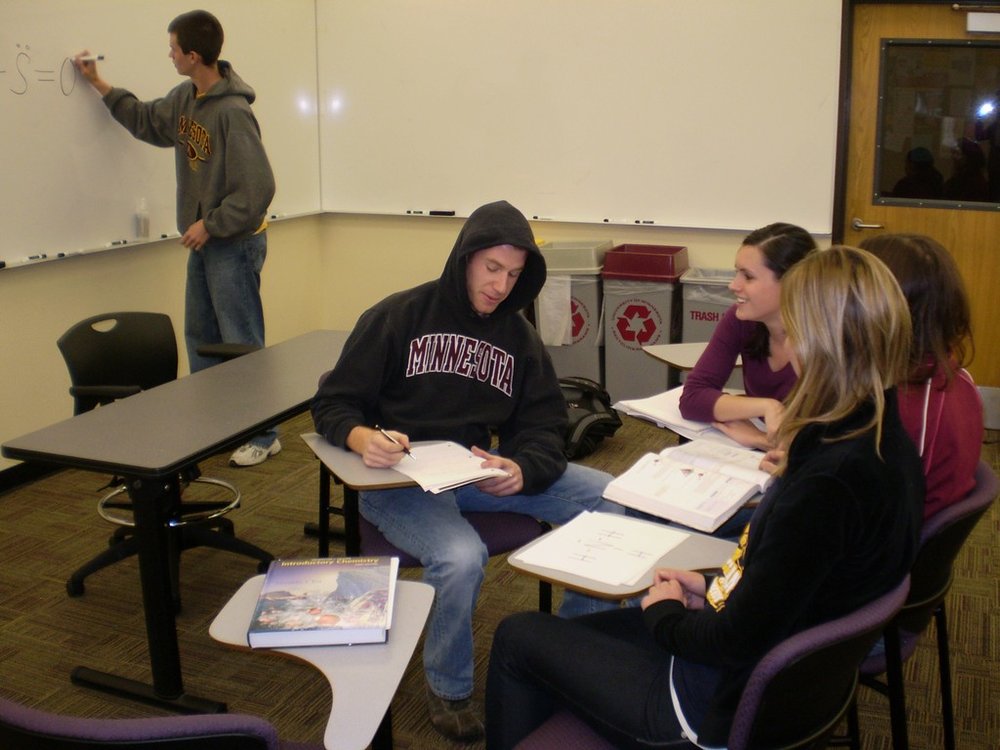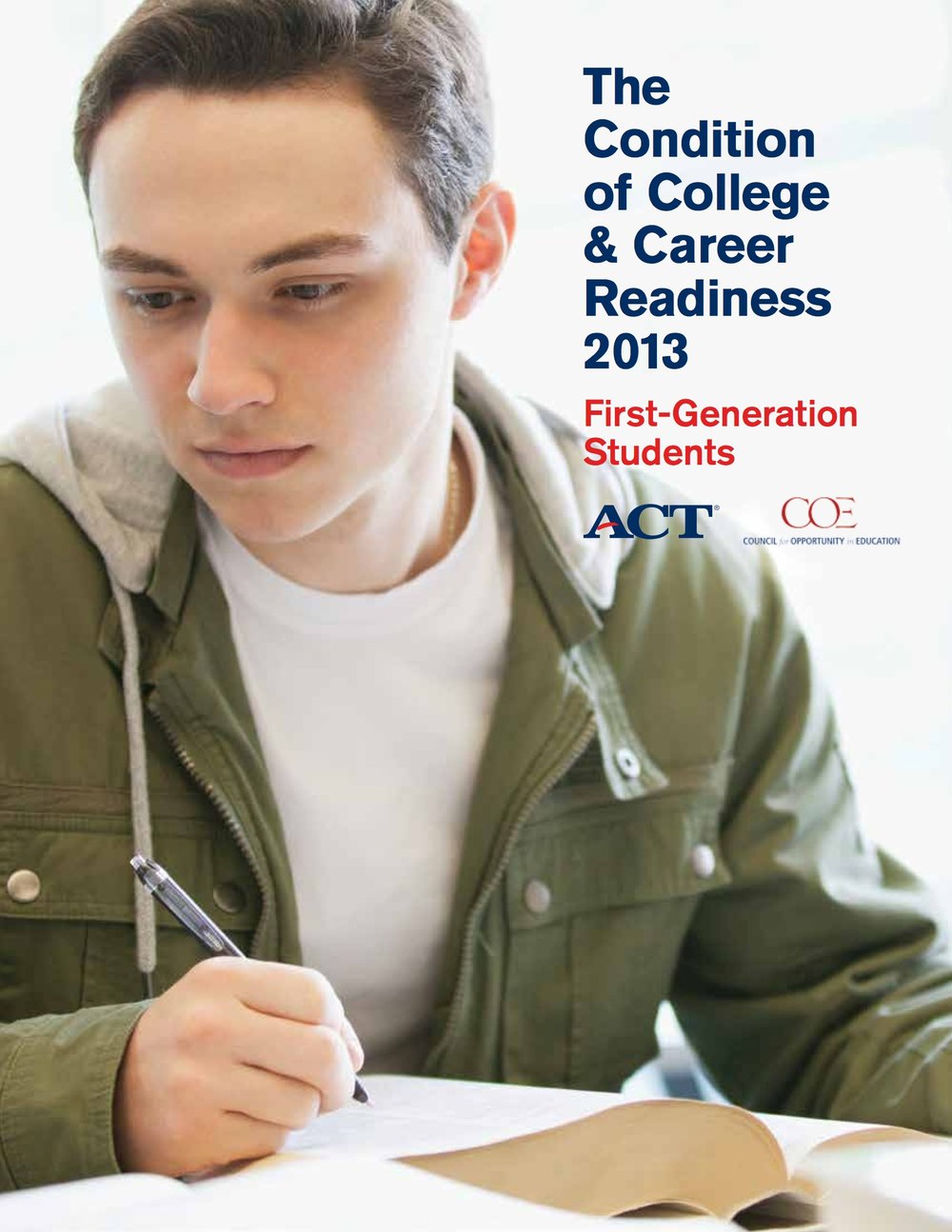
This blog focuses on my scholarship in my five research projects: learning assistance and equity programs, student peer study group programs, learning technologies, Universal Design for Learning, and history simulations. And occasional observations about life.
Counseling Makes a Difference for Low-Income Students Attending College
 From Inside HigherEd by Scott Jaschik. "A theme of several studies in the last year has been that there are plenty of academically talented low-income students who for some combination of reasons are not applying to competitive colleges to which they would probably be admitted. A new study along those lines -- this time documenting the impact of intense college counseling -- was released Monday by the National Bureau of Economic Research. The study (abstract available here) found that a nonprofit group that focuses on college counseling in Minneapolis-St. Paul had a significant impact in increasing the rate at which low-income students enrolled in four-year colleges, including competitive institutions.
From Inside HigherEd by Scott Jaschik. "A theme of several studies in the last year has been that there are plenty of academically talented low-income students who for some combination of reasons are not applying to competitive colleges to which they would probably be admitted. A new study along those lines -- this time documenting the impact of intense college counseling -- was released Monday by the National Bureau of Economic Research. The study (abstract available here) found that a nonprofit group that focuses on college counseling in Minneapolis-St. Paul had a significant impact in increasing the rate at which low-income students enrolled in four-year colleges, including competitive institutions.
 The study was conducted by Christopher Avery of Harvard University -- co-author (with Caroline Hoxby of Stanford University) of a study released in December that found that most highly talented, low-income students never apply to a single competitive college. That work has set off widespread discussions about what sort of interventions might make a difference. Avery's new study looks at College Possible, a program that provides in-depth college counseling as well as tutoring on the ACT or SAT. Avery was able to study the impact of the program by comparing results on College Possible participants with those who applied to (and were not admitted to) the program despite having slightly better academic preparation. The study found no statistically significant gains in ACT scores for those who participated in the program. Avery writes, however, that this may understate the impact of the program, because he suspects that some of those who didn't get into College Possible found test-prep services elsewhere. But the study found a significant impact on College Possible participants in applying to and enrolling in four-year colleges, and especially to competitive colleges. More than 45 percent of the students in the College Possible program enrolled at a four-year college, while the figure in the control group was 34 percent. And the most popular college among those in the program was Augsburg College, a competitive liberal arts college that did not enroll a single student from the control group (though some would appear to have been academically qualified had they applied). The findings could be significant in that the earlier Avery-Hoxby study noted that low-income students who enroll in more competitive colleges are more likely to land at institutions with better graduation rates, more financial aid, and more resources to promote their academic success.
The study was conducted by Christopher Avery of Harvard University -- co-author (with Caroline Hoxby of Stanford University) of a study released in December that found that most highly talented, low-income students never apply to a single competitive college. That work has set off widespread discussions about what sort of interventions might make a difference. Avery's new study looks at College Possible, a program that provides in-depth college counseling as well as tutoring on the ACT or SAT. Avery was able to study the impact of the program by comparing results on College Possible participants with those who applied to (and were not admitted to) the program despite having slightly better academic preparation. The study found no statistically significant gains in ACT scores for those who participated in the program. Avery writes, however, that this may understate the impact of the program, because he suspects that some of those who didn't get into College Possible found test-prep services elsewhere. But the study found a significant impact on College Possible participants in applying to and enrolling in four-year colleges, and especially to competitive colleges. More than 45 percent of the students in the College Possible program enrolled at a four-year college, while the figure in the control group was 34 percent. And the most popular college among those in the program was Augsburg College, a competitive liberal arts college that did not enroll a single student from the control group (though some would appear to have been academically qualified had they applied). The findings could be significant in that the earlier Avery-Hoxby study noted that low-income students who enroll in more competitive colleges are more likely to land at institutions with better graduation rates, more financial aid, and more resources to promote their academic success.San Jose State Efforts for First-Generation College Students


Also looking to expand the program is Art King, the university's associate vice president for student affairs. "Right now we only look at first-generation students when they come in, but they are first-generation students throughout their time at college," he says. "My hope is to have programs for second-year students, third-year students, and for fourth-year students, so each group gets appropriate resources and help."
Because the program is new and growing, there is not much long-range data on its effectiveness. Ms. Morazes is tracking the progress of participating students, including retention rates after the first year and progress toward declaring a major and earning a degree. She conducts evaluations before and after events to assess changes in students' knowledge of campus resources, their sense of belonging and connectedness, and whether they feel they are on track to earn a degree...."
Highlights from College Completion Annual Conference: Game Changers

Speakers also argued that too many students are placed directly in remedial courses on the basis of a single placement test, dooming many to a semester or more of courses they pay for but don't get credit for. Mathematics educators described accelerated math pathways, like Statway and Quantway, that they say are more relevant to most students than the traditional sequences that trip up many learners The approach, which was developed with the University of Texas at Austin's Charles A. Dana Center, is being used this fall across all of Texas' 50 community-college districts.
The group also heard from students. Kierra Brocks said that when she enrolled at Ivy Tech Community College, in Indiana, she missed the cutoff in math by two points and ended up in a remedial class that didn't challenge her. "It wasn't only money wasted but time wasted," she said. "It doesn't give you motivation to continue."
Top Rated New Activities TRIO Leaders Want for Their Programs
 In spring 2012 MAEOPP surveyed its members regarding what education practices they wanted for their programs. The information is categorized by highest priority and also by category. This information might be helpful for MAEOPP members as they consider education practices to submit from their own programs.
In spring 2012 MAEOPP surveyed its members regarding what education practices they wanted for their programs. The information is categorized by highest priority and also by category. This information might be helpful for MAEOPP members as they consider education practices to submit from their own programs.
Practices requested by more than half of the survey responders:
- Financial literacy curriculum and activities
- Strategies for raising retention rates of students within the program
- Leadership development
- Study skills building workshops or courses
- Methods of assessing students for academic advisement
- Improved attitudes towards learning
- Improved student confidence
- Effective methods for tracking students after program completion
- Career exploration activities and classes
- Holistic assessments of students (example uses could be for program admission, academic advisement, or other program purposes)
- Job shadowing activities
- Career interest assessments and activities
[Click on this link to download the two-page survey results.]
New Report from ACT and COE, Condition of College Readiness 2013: First-Generation College Students
"This report on first-generation students is significant because it acknowledges the necessity of developing policies to promote college readiness with the needs of this population in mind." <Click here to download this report from ACT and COE.>
"Not surprisingly, first-generation students lag behind their peers in meeting college readiness benchmarks in core subject areas. The lack of families’ college background makes it all the more vital that schools with large percentages of first-generation students integrate supportive services into the required curriculum to create a college-going culture. Also, they must implement these services and strategies on a school-wide basis to ensure that all students are embarked on a path to college. Further, we recommend that schools partner with local colleges to offer dual enrollment in areas of greater propensity and interest for first-generation students. Dual-enrollment programs capitalize on students’ strengths and demonstrate to them that they are capable of doing college-level work.
The findings of this joint ACT/COE report underscore the importance of greater support for college access programs like TRIO and GEAR UP. For decades, these programs have provided academic tutoring, mentoring, counseling, and other supportive services to low-income and first-generation students to make the dream of college a reality. Recent federal initiatives have emphasized early childhood education; the nation must capitalize on that investment by continuing to support these students once they enter elementary and secondary school." Maureen Hoyler, President, Council for Opportunity in Education
15 to Finish: Why don't college students enroll in 15 or more credits?
There has been quite a storm of reaction to the recent article in the Chronicle of Higher Education, "Redefine 'full time" so students can graduate on time, paper suggests." Complete College America is holding their annual conference and released another policy brief that endorsed the solution to the college completion problem is to simply make students take 15 credits every semester till they get done. They do an excellent job of stating the obvious:
- Most college students (69%) not enrolled in a schedule that leads to on-time graduation, even if they never changed majors, failed a course, or took a class they didn’t need
- Even among “full-time” students, most (52%) actually taking fewer than 15 hours, standard course load that could lead to on-time graduation
- At most two-year colleges, less than a third “full-time” students taking 15 or more hours
- At four-year colleges, typically only 50 % or fewer “full-time” students enrolled in 15 hours.
Then they state the obvious consequences of such actions:
- Taking 12 credits per term instead of 15 can add a year to a four-year degree or half a year to a two-year degree, even if students never fail a course, change majors, or take a class beyond their degree requirements.
- Students, parents, and public financial aid programs paying more for a degree when students have to enroll in more semesters.
- Students lose out on a year of employment and income if they spend an additional year in school.
- Fewer students served by institutions with limited capacity—advising, parking, dormitories, etc.
- Dropout rates are higher for students who take fewer credits. In the 2004/2009 BPS study, 17% of students who completed 30 credits their first year dropped out without a degree by the end of six years, compared to 23% of students who completed 24-29 credits.(The difference in completion rates is even bigger, since the low-credit students are also more likely to remain enrolled without a degree.)
The simple solution, everyone takes 15 or more hours. Or else. From the CCA website, "Incentives [for enrollment in 15 or more credits] can be as simple as preferred parking on campus and as substantial as financial aid policies that reward credit accumulation.” So if you don't keep up, give more financial aid to the students who are taking 15 or more and financially punish those that do not. I looked through the CCA website and never read anything that explained why students would be so foolish to not enroll in 15 or more credits. Readers of the article in the Chronicle provided the nuanced answer. <Click here for a sample of their responses and my posting to a email listserv on this topic.> Students don't have time due to working multple part-time jobs to pay for rising tuition, students bring to college credits earned elsewhere, students have family obligations, and the list goes on. The answer is a lack of "time" and the students are smart to limit their course load to a level they can accomplish.
I decided to dig deeper and went to the research studies the CCA was citing. the 15 to Finish website, http://www.15tofinish.com/ contains the reports from a community college in Hawaii that has studied this issue. <Click on this link for one of their research studies.>
Research Objective: Impact of enrolling 15 or more credits on student performance. First-time freshmen for the UG Community College campuses Fall 2009, 2010, 2011 Only 7.4% of the 17,960 freshmen took 15 or more credit hours in their first semester. The average credit hour load was 10.6 hours. Students divided into two groups: took less than 15 or enrolled in 15 or more hours.. Each group organized by academic preparation, demographics, and academic success.
Findings of students who took 15 or more hours:
- Higher average Compas placement test scores.
- Were younger, tended to be recent high school graduates, and had a higher percentage with financial need met, and less likely to be an ethnic minority.
- Performed better as measured by first semester GPA, percentage with a “B” or “C+” or higher grade average, credit completion ration above 80%, and persistence.
- Students with higher academic preparation scores performed better academically
The Research Study Conclusion: “First-time students at the UH Community Colleges can successfully carry 15 credit hours. Student success varies by academic preparation, with those students scoring higher on academic preparation preforming better… Students taking 15 or more credits outperformed students taking fewer than 15 credits across all levels of academic preparation. The fact that students taking 15 or more credits persist at higher rates may indicate greater student engagement. The more important question is why so few students at the UH Community Colleges take 15 or more credits. Analysis indicates that academic preparation is not the limiting factor. The low percentage of students taking the higher credit load may indicate that 12 credits has become the culturally accepted norm for full-time enrollment.”
Too bad they didn't ask the students why they did not take 15 or more. More than half of the report are data tables that carefully document their findings. But they did not analyze number of hours worked, number of jobs worked, and a host of other factors that help explain why students do not have time to enroll in 15 or more. The study said the 15 or more students were younger. I wonder about relationship status and number of dependents between the two groups. Younger, academically prepared students with full financial aid probably do not have the financial needs and time obligations of the others. And those that take less than 15 hours. They number over 90 percent of the student body. Would you not want to understand WHY? This is the research the CCA cites as proof the answer is simple, make everyone take 15 or more credits without concern why they behave the way they do.
It is obvious CCA is displeased with the federal government's definition of full-time status to receive Pell Grants is 12 credits. Here is my question for the CCA, how long until you begin to lobby for raising the minimum credits to 15 to receive a Pell Grant? It is only a matter of time. It is such a simple answer. Supposedly H. L. Mencken said, "For every complex problem there is an answer that is clear, simple, and wrong."

